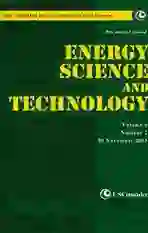Substitution of Coke and Energy Saving In Blast Furnaces. Part 5. Problems and Prospects of Low-Coke Blast-Furnace Technology
2014-03-21I.G.Tovarovskiy
I. G. Tovarovskiy
Abstract
Two most promising known non-traditional blast furnace technologies can be used to minimize the coke rate: 1) the tuyere injection of the hot reducing gases with removal of CO2 from the top gas and 100% oxygen blast; 2) injection of 300-400 kg pulverized coal/thm (PCI-technology).
The injection of hot reducing gases (HRG) is limited by the heat balance of the entire Iron & Steel Works since the blast furnace gas will not be supplied to other works in sufficient quantity. The combustion and gasification of significant amount of coal and liquation of coal ash in the tuyeres raceway are the limitations for the PCItechnology. Lack of resources, low-ash coal for pulverized coal injection—PCI (pulverized coal full—PCF) requires solutions to technical problems of the use of high-ash coals, in particular, partial and full gasification of fuel before entering the tuyere area of BF.
Injection of the products of coal gasification (PCG) instead of PCI into the blast furnace tuyeres eliminates these limitations. The advantages of this technology in comparison with traditional PCI injection are as follows: increase in coal rate and decrease in coke consumption; possibility of low grade coals usage; elimination of fine coal grinding; gas desulphurization in the course of coal gasification and the possibility of coal ash fluxing and being removed from the process.
The special compact coal gasifiers attached to the blast furnaces tuyeres were developed and tested at industrial scale. The estimated decrease in coke consumption from 565 kg/thm to 305 kg/thm with injection of 300 kg/thm of coal gasification products and 105 kg/thm of oxygen was specified with respect to operation of blast furnaces at Zaporozgstal Iron & Steel Works (90 years of the last century).
The study by using a multi-zone mathematical model showed that the temperature-concentration and phase fields of the charge and the gas flow in the furnace change under the influence of the same tendencies that are seen with the injection of pulverized-coal fuel (PCF). The fact that the amount of coal which can be injected could be increased significantly by subjecting it to preliminary gasification and fluidizing the ash in tuyere-mounted gasifiers means that the targeted savings of coke could be realized by replacing coke with either high-grade coals(in the form of PCF) or low-grade coals (in the form of CGPs). In this case, for the best variants of the technology the ratio of the equivalents for the replacement of coke by coal is close to the ratio of the contents of nonvolatile carbon in the high- and low-grade coals (0.65 in the present case).
杂志排行
Energy Science and Technology的其它文章
- Diffusion, User Experiences and Performance of UK Domestic Heat Pumps
- Molten Carbonate Fuel Cell Combined Heat, Hydrogen and Power System: Feedstock Analysis
- Practical Evaluation of Solar Irradiance Effect on PV Performance
- Mathematical Modeling of a Solar Passive Cooling System Using a Parabolic Concentrator
- Energy Analysis of a Concentrating Photovoltaic Thermal (CPV/T) System
- Feasibility of Recharging Electric Vehicles With Photovoltaic Solar Panels
